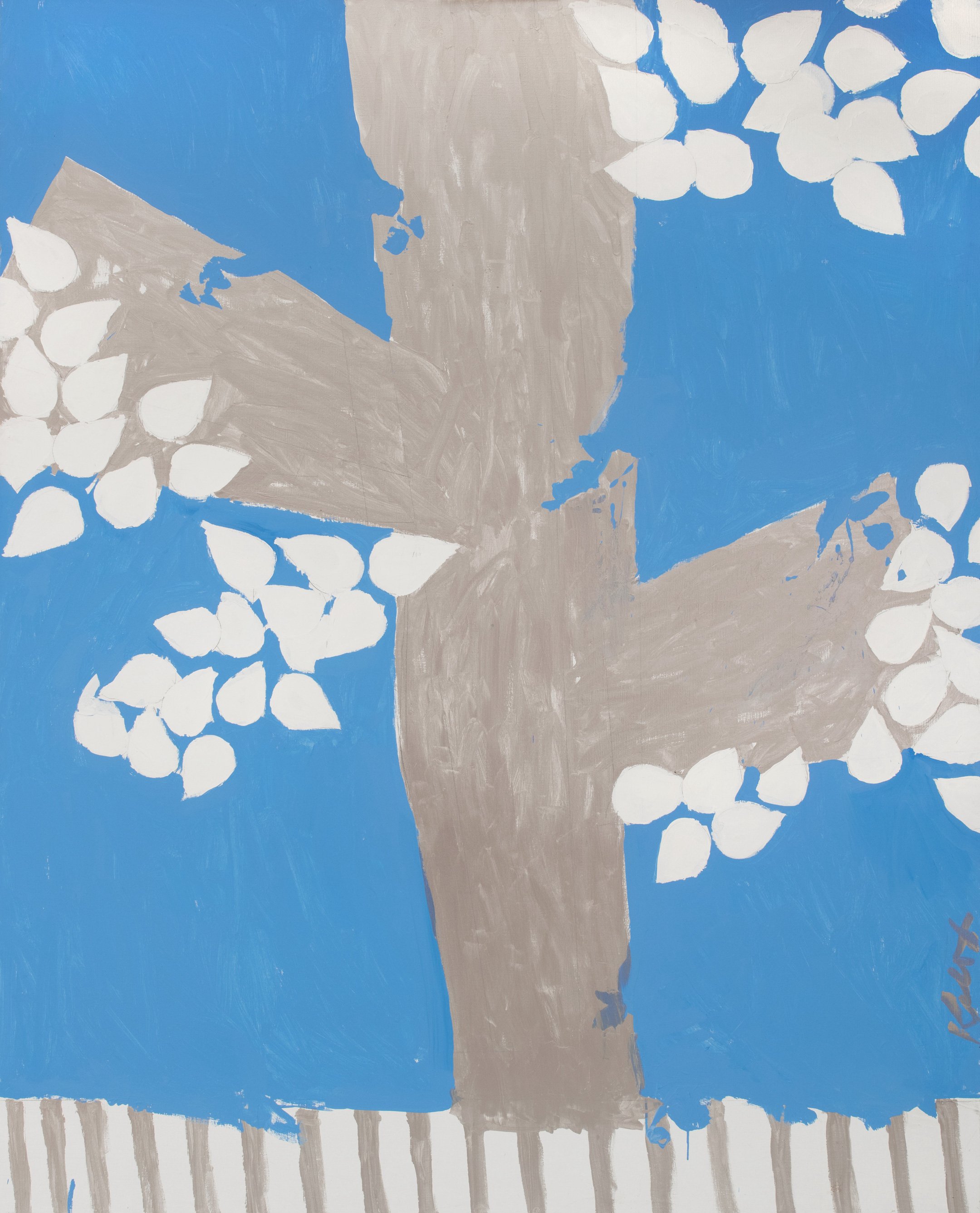Knox Martin
ABOUT THE ARTIST
A pioneering painter of the New York School, Knox Martin has carved a unique niche for himself in postwar American art through an astonishing career spanning eight decades. A frequent visitor to the Cedar Tavern in the 1950s where he engaged in lively conversation with artists such as Franz Kline and Willem de Kooning, Martin befriended the most prominent artists of his time and had considerable influence over his colleagues at the Art Students League, including Robert Rauschenberg, who once told Martin, “You are my mentor. For years I always asked, what would Knox think of my painting?” Early in his career, Martin was offered a solo exhibition by Charles Egan, the dealer renowned for introducing de Kooning to the public. Admired by generations of artists and historians, Martin’s practice is marked by bold, playful palettes, a virtuosic compositional ability, and a lifetime of study of art historical figures.
Though Martin’s initial work developed in the milieu of high Abstract Expressionism, he did not associate himself with any singular movement and instead forged his own distinctive path. His paintings often incorporate geometric structures, references to the natural world, and the female figure, all which are enduring hallmarks of his works. In 1965, art historian Irving Sandler observed that Martin’s work continued to convey the assertive physicality of Action Paintings of Pollock and de Kooning, but filtered this physicality through a “classicizing inclination––a will to clarity––which predisposes [his works] to quasi-geometric structures, composed of exact planes of color.” (1)
Martin’s intimate connection to flora and fauna, and the organic imagery in his work can be traced to his conceptualization of creation itself as the theoretical core of his practice. As he explains: “the subject matter of art is creation. It is a quickening and a heightening––a kind of ecstasy––with an ability to combine that energy with an intelligence that comes through all of it and brings the art to the point where there is fire. Like Prometheus’ gift to mankind, the artist gives man fire.” (2) Rather than rendering flowers, vegetables, fruit, and animals in a naturalistic way, Martin often presents them through a highly stylized aesthetic, imbuing these works with a poetic life force. His diverse array of studio pets, including a snake, pig, piranhas, tarantulas, and a beloved African parrot that speaks to Martin while he paints, attests to his long-standing fascination with the natural world.
Born in Colombia in 1923, Knox Martin is the son of aviator and painter William Knox Martin, the first man to fly over the Andes Mountains. After serving in World War II, Martin went on to enroll at the Art Students League on the G. I. Bill, where he studied under luminaries such as Will Barnet and Morris Kantor. In addition to a prolific painting career, Martin also led a distinguished teaching career. He taught at Yale Graduate School of the Arts, New York University, University of Minnesota, and the Art Students League, where he gave a legendary Master class for over 45 years. His work is held in numerous public institutions, including Whitney Museum of American Art; Art Institute of Chicago; Baltimore Museum of Art; New York University Collection; Museum of Art, Austin, Texas; Hirschhorn Museum, Washington D.C.; Museo de Prado, Barranquilla, Columbia; Israel Museum, Jerusalem; Bibliotheque Nationale, Paris; Brooklyn Museum, New York; Corcoran Gallery of Art, Washington D.C.; Albright Knox Art Gallery, Buffalo, New York, among many others.




